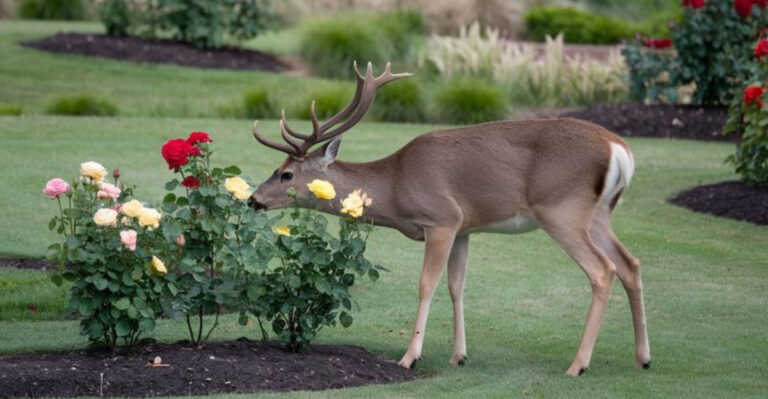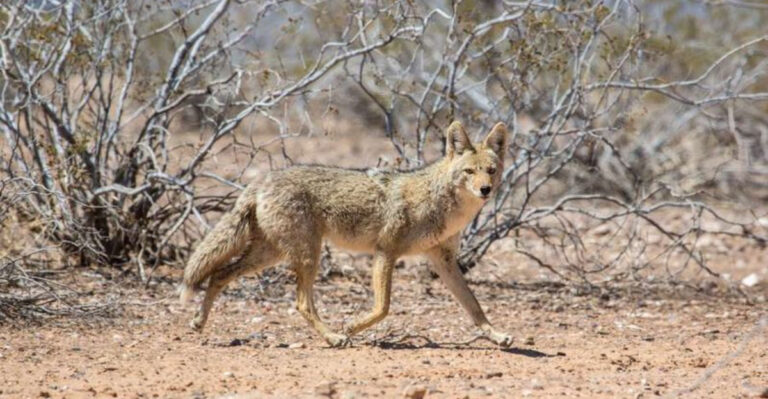20 Fascinating Facts You Should Know About Pika
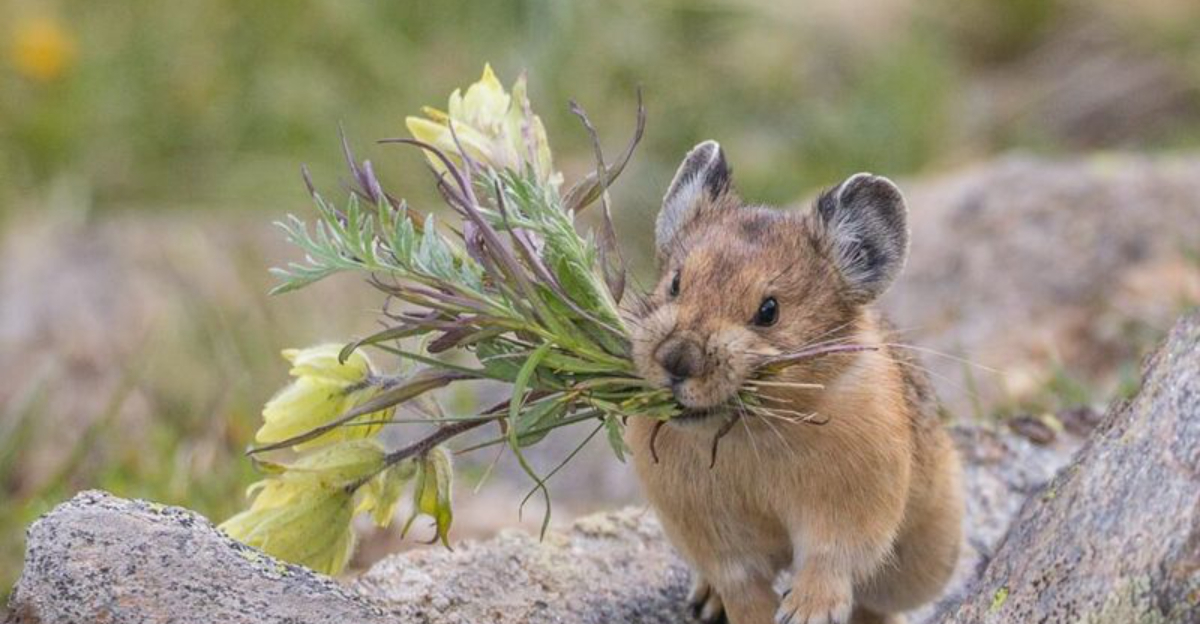
Pikas are small, adorable creatures that often go unnoticed in the animal kingdom. Despite their size, these little animals have a wealth of interesting characteristics and behaviors that make them truly fascinating.
Found primarily in cold, mountainous regions, pikas are known for their resilience and unique adaptations to their challenging environments. Today, we’ll explore intriguing facts about pikas, offering insights into their lifestyles, habitats, and more.
1. Close Relatives Of Rabbits
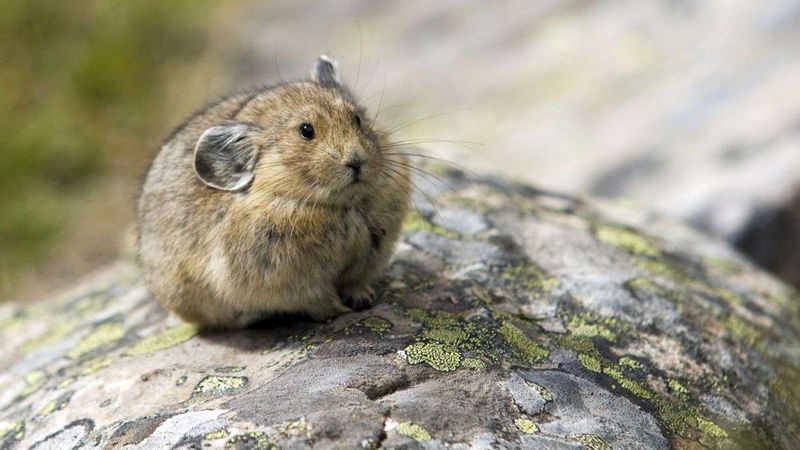
Pikas, despite their rodent-like appearance, belong to the lagomorph family, which includes rabbits and hares. Unlike rodents, lagomorphs have four incisors in the upper jaw. Pikas exhibit fascinating evolutionary traits that link them to their rabbit and hare relatives. Their round bodies and short limbs are perfect for their cold habitats.
These creatures share some behaviors with rabbits, such as herbivorous diets and rapid breeding cycles. However, unlike rabbits, pikas don’t dig burrows; they prefer rocky crevices in mountainous regions.
Their charming behavior of collecting plant material to create haypiles sets them apart, showcasing their unique adaptation strategies.
By understanding their classification, we appreciate the evolutionary paths that have shaped their survival. Watching them interact with their environment is like peering into a living museum of natural history.
Their relationship with rabbits and hares not only highlights their evolutionary journey but also underscores the diversity within the animal kingdom.
2. No Tail!
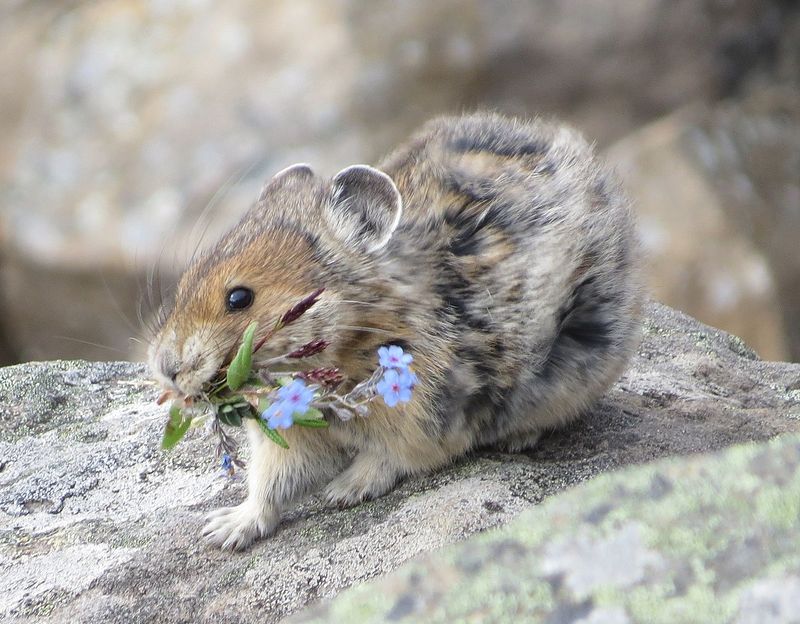
Pikas are unique among small mammals for their lack of visible tails. While most small animals rely on tails for balance or communication, pikas have evolved to thrive without them. This absence contributes to their distinct silhouette, making them easily recognizable against their rocky backgrounds.
Their tailless form is not just an oddity; it’s a testament to their adaptation to life in rugged terrains. Without tails, pikas reduce their risk of injury as they dash between rocks and navigate narrow crevices. This streamlined shape minimizes their silhouette, helping them evade predators.
The absence of a tail might seem like a disadvantage, but for pikas, it’s a perfect fit for their lifestyle. By examining their morphology, we gain insights into how nature shapes species to fit their environment. Their unique body design is a constant reminder that in evolution, form follows function.
3. Mountain Climbers
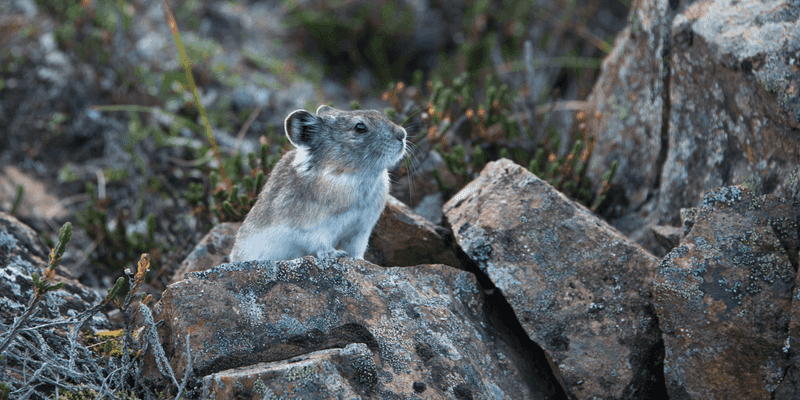
Pikas are extraordinary mountain dwellers, predominantly found in the rocky terrains of Asia and North America. Their choice of habitat speaks volumes about their climbing prowess and adaptability. Living in such challenging environments requires exceptional agility and endurance, traits that pikas possess in abundance.
These adept climbers navigate their steep, rugged homes with ease, leaping from rock to rock with remarkable speed. Their small size and nimble bodies allow them to squeeze through tight crevices, escaping predators and seeking shelter from harsh weather. This ability to thrive in high altitudes where few animals dare to venture highlights their resilience.
Mountain living isn’t just a survival tactic; it’s a testament to their evolutionary success. Watching them maneuver through these landscapes inspires admiration for their tenacity. In their rocky abodes, pikas exemplify the incredible adaptability of life, showing that even in the harshest conditions, nature finds a way to thrive.
4. Heat-Sensitive
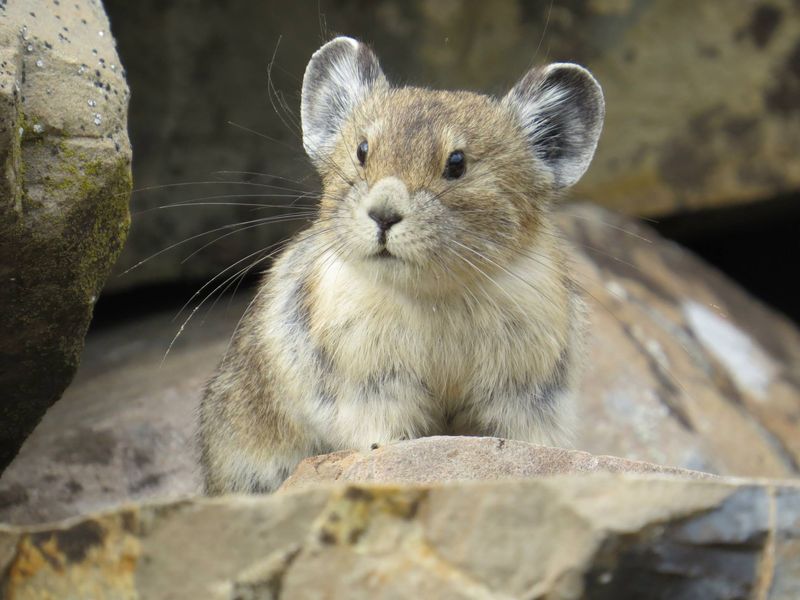
Pikas are acutely sensitive to heat, which poses a significant threat to their survival. These small mammals are adapted to cold environments, and temperatures above 77°F (25°C) can be lethal for them. As climate change leads to global warming, pikas face increasing challenges.
Their bodies are adapted to retain heat, making them vulnerable to overheating during warmer months. To cope, pikas often retreat to shaded areas or higher altitudes where the temperature is cooler. Unfortunately, as temperatures rise, their habitats shrink, forcing them higher up the mountains where resources become scarcer.
This heat sensitivity underscores the urgency of addressing climate change to preserve these remarkable creatures. By understanding their vulnerabilities, we gain a greater appreciation for the delicate balance within ecosystems. Pikas remind us of the far-reaching impacts of environmental changes and the importance of protecting our planet’s biodiversity.
5. Herbivores
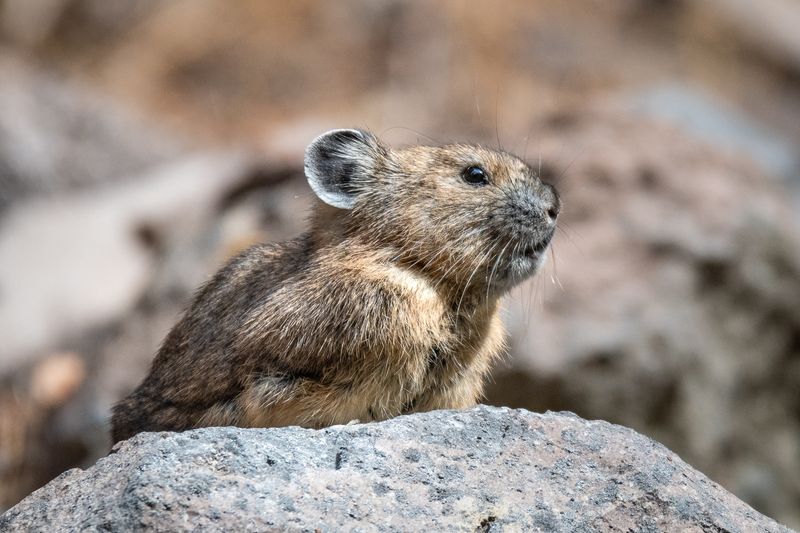
Pikas are strict herbivores, thriving on a diet rich in grasses, flowers, and mosses. Their feeding habits are a testament to their adaptability and the intricate balance of their ecosystems. These small mammals play a crucial role in their habitats by influencing plant community structures and nutrient cycling.
Their foraging activities are fascinating to observe, as they meticulously select the most nutritious plants to consume. This selective feeding not only ensures their survival but also impacts the growth patterns of various plant species. By understanding their dietary preferences, we gain insights into the interconnectedness of ecosystems.
Watching a pika nibble on fresh greenery is a delightful sight, showcasing the simple yet profound relationship between herbivores and their environment. Their diet reflects a harmonious existence within their ecological niche, reminding us of the importance of every organism in maintaining the balance of life.
6. Haystack Builders
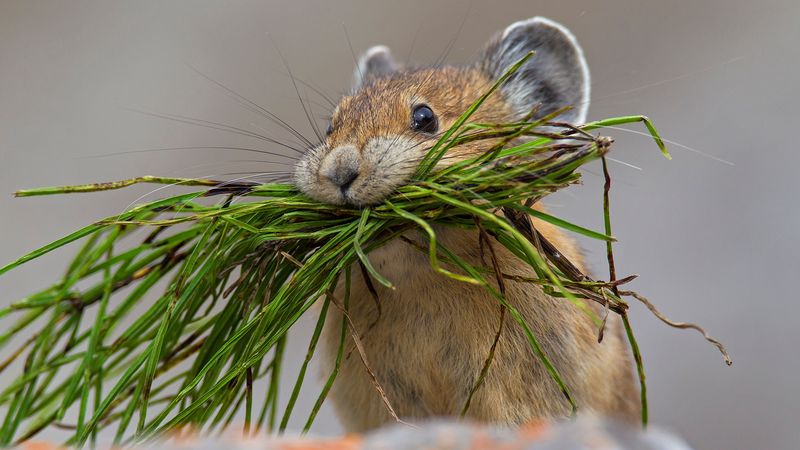
In lieu of hibernation, pikas engage in the fascinating behavior of building “haypiles” to survive the winter months. This industrious activity illustrates their resourcefulness and adaptability. During the warm seasons, pikas meticulously gather and dry a variety of plants, stacking them into mounds for later use.
These haypiles serve as vital food reserves when fresh vegetation is scarce. The process of collecting and arranging these piles demonstrates their foresight and survival instincts. By observing this behavior, we gain insights into their complex interaction with their environment and their ability to plan for future challenges.
Building haypiles is not just a survival tactic but a testament to their ingenuity. This behavior showcases the intricate strategies that animals develop to thrive in harsh conditions. Through their industrious efforts, pikas teach us about the power of preparation and the delicate balance of nature’s cycles.
7. Vocal Communicators
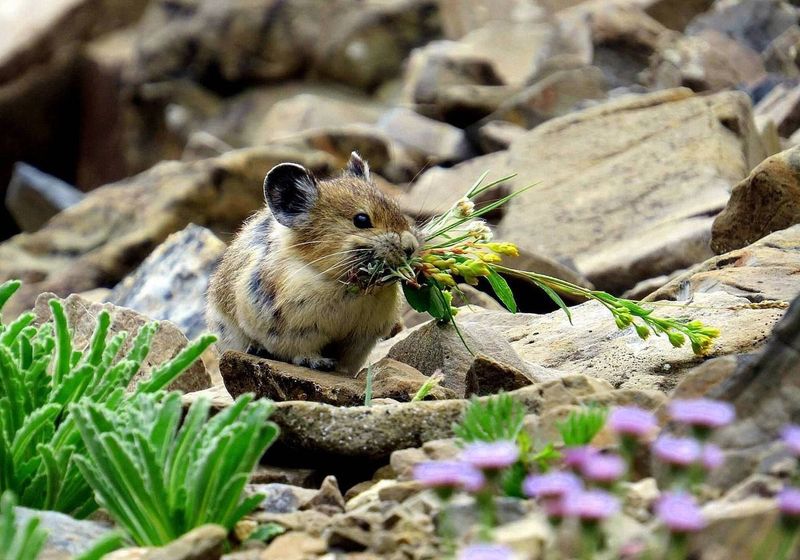
Pikas are highly vocal creatures, using an array of calls to communicate with each other. Their vocalizations, which include squeaks, whistles, and chirps, serve various purposes, from warning against predators to establishing territory. This vocal behavior is a vital aspect of their social interactions and survival strategies.
By emitting loud calls, pikas can quickly alert others to danger, enhancing their collective security. These vocal signals are also used during mating season to attract partners and assert dominance. The complexity of their communication demonstrates the sophisticated social structures within pika communities.
Listening to their calls, one can appreciate the rich tapestry of sounds that fill their mountainous habitats. Their vocal prowess not only highlights their adaptability but also underscores the importance of communication in the animal kingdom. Through their voices, pikas remind us of the universal need to connect and cooperate.
8. Solitary But Social
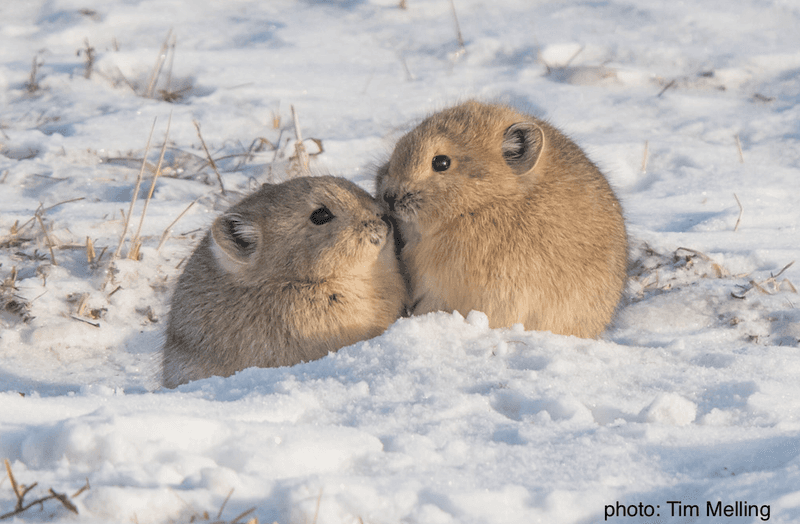
Pikas are an intriguing blend of solitary and social creatures. While they prefer to live alone, especially in their rocky habitats, they maintain loose social connections with their neighbors. This unique social structure allows them to balance independence with the benefits of community living.
During the breeding season, these connections become more apparent as pikas engage in various interactions with nearby individuals. While they don’t form tight-knit groups, their occasional social behaviors help in mate selection and territory establishment. This complex social dynamic highlights their adaptability and the delicate balance they maintain in their environments.
Their solitary nature doesn’t equate to isolation; rather, it’s a strategic choice that ensures resource availability while allowing for social interaction when necessary. This ability to thrive both individually and within a community offers valuable insights into the diverse survival strategies among animals. Pikas show us that there is strength in both solitude and connection.
9. Fast Breeders
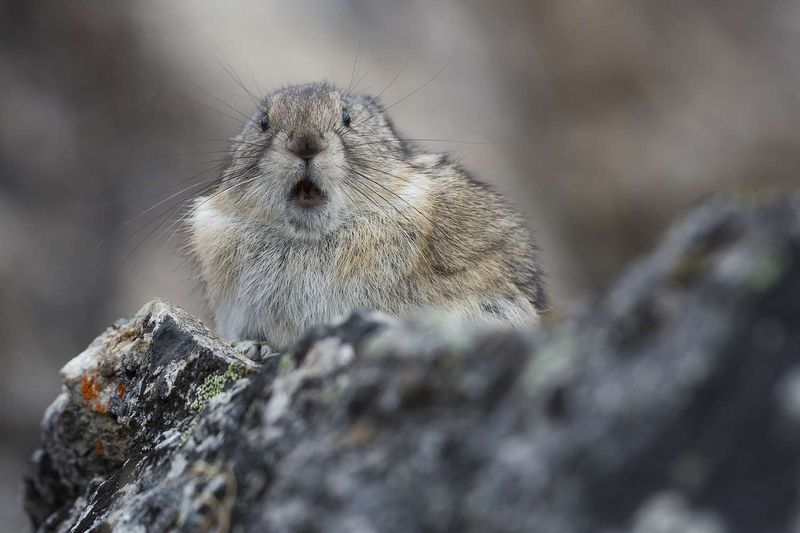
Pikas are known for their impressive reproductive capabilities, with females capable of producing two litters per year. Each litter typically consists of 2–6 kits, a testament to their rapid breeding cycles. This reproductive strategy is crucial for maintaining population stability in their challenging mountainous habitats.
The short gestation period and frequent breeding allow pikas to quickly recover their numbers, especially after harsh winters or when faced with predation.
This ability to reproduce efficiently ensures their species’ survival in environments where conditions can change rapidly. Observing a mother pika caring for her young is a heartwarming sight, underscoring the nurturing aspect of these creatures’ lives.
Pikas’ reproductive success is not just a biological necessity but a fascinating glimpse into their resilience and adaptability. Their ability to thrive in such demanding conditions offers valuable lessons in perseverance and survival. Through their lifecycle, pikas remind us of the remarkable ways life endures in the face of adversity.
10. Active Year-Round
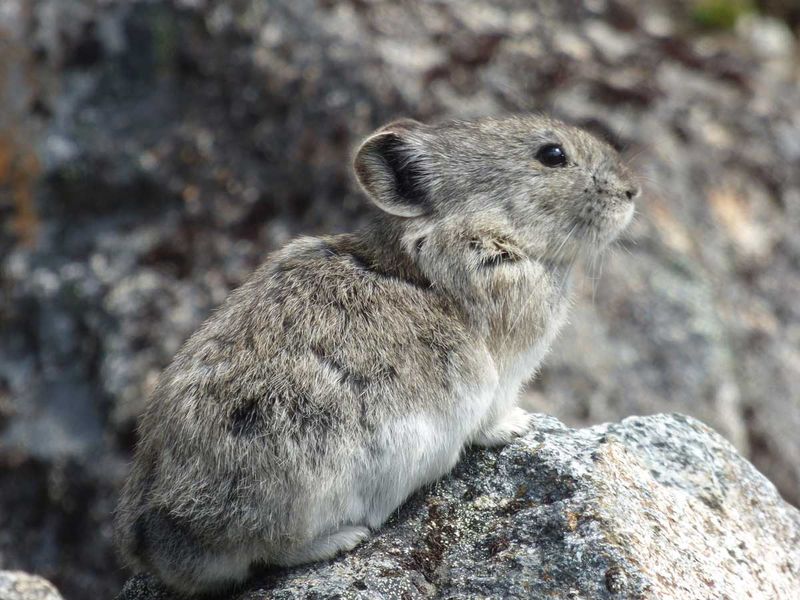
Unlike many alpine animals, pikas remain active throughout the winter, a testament to their resilience and adaptability. This non-hibernating behavior is supported by their diligent preparation during the warmer months, when they build haypiles to sustain themselves through the cold.
Their year-round activity allows them to maintain their territories and stay alert to environmental changes and potential threats. This continuous presence in their habitats highlights their remarkable ability to adapt to challenging conditions.
Observing pikas foraging in the snow is a fascinating insight into their survival strategies and the intricate balance they maintain in their ecosystems.
Their active lifestyle, even in the harshest seasons, underscores their resourcefulness and the importance of preparation. By watching their winter activities, we gain a deeper appreciation for the complexity of life in alpine environments.
11. American Pika
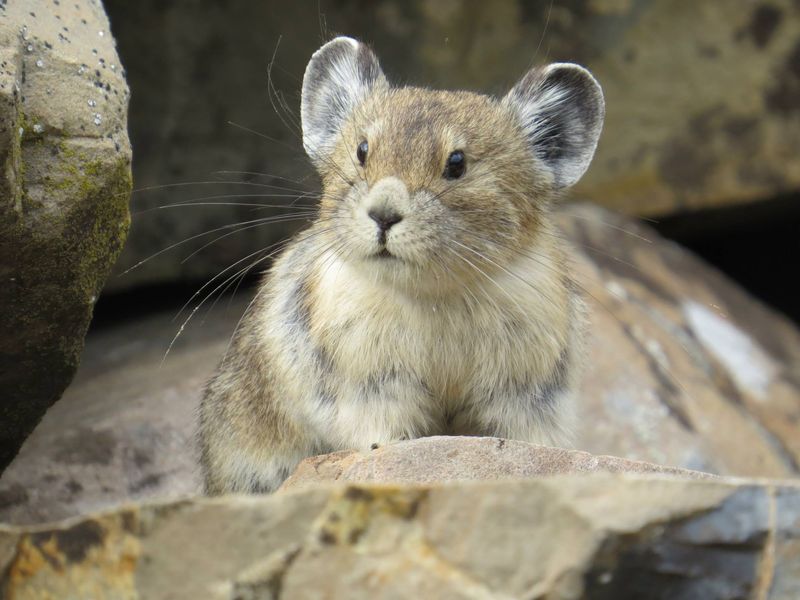
The American pika (Ochotona princeps) is a charming representative of its species, found in the Rocky Mountains and other western regions of the United States. Known for its sensitivity to temperature changes, this species has become a symbol of climate change awareness, highlighting the impact of environmental shifts on biodiversity.
With their rounded ears and dense fur, American pikas are well-adapted to their cold, mountainous homes. They thrive in rocky terrains, where they build haypiles and navigate their rugged landscapes with agility. Observing these creatures in their natural habitat offers a glimpse into their unique adaptations and the challenges they face.
As climate change continues to influence their environment, American pikas serve as important indicators of ecological health. Their presence in the wild is a reminder of the delicate balance within ecosystems and the urgent need for conservation efforts. Through the American pika, we see the interconnectedness of life and the critical role each species plays in maintaining ecological harmony.
12. Ili Pika
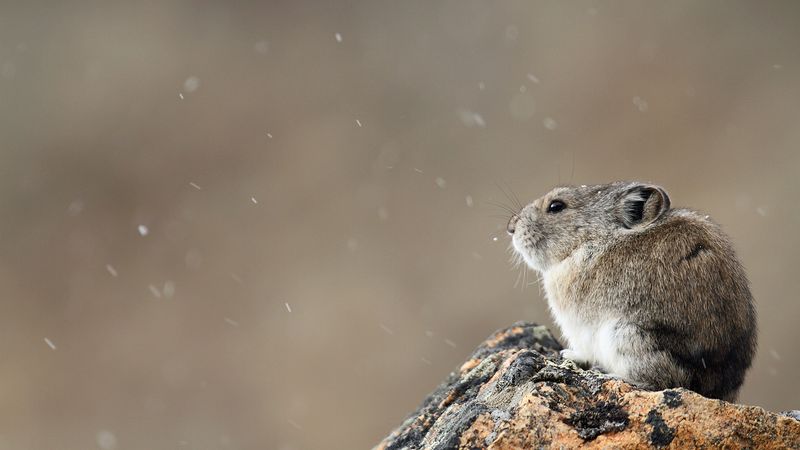
The Ili pika (Ochotona iliensis) is an incredibly rare and endangered species native to the Tianshan Mountains in China. Known for its elusive nature and charming appearance, this pika has captured the hearts of wildlife enthusiasts worldwide. Its discovery in the 1980s was a significant event, highlighting the rich biodiversity of its region.
With its teddy bear-like face and small size, the Ili pika is often called one of the cutest animals in the world. Despite its endearing appearance, it faces numerous threats, including habitat loss and climate change. Conservation efforts are crucial to protect this species and preserve its unique ecological niche.
Spotting an Ili pika in the wild is a rare and delightful experience, offering a glimpse into its secretive lifestyle. This species’ survival is a testament to the resilience of nature and the importance of preserving our planet’s biodiversity. Through the Ili pika, we are reminded of the wonders of wildlife and the need to cherish and protect these living treasures.
13. Steppe Pika
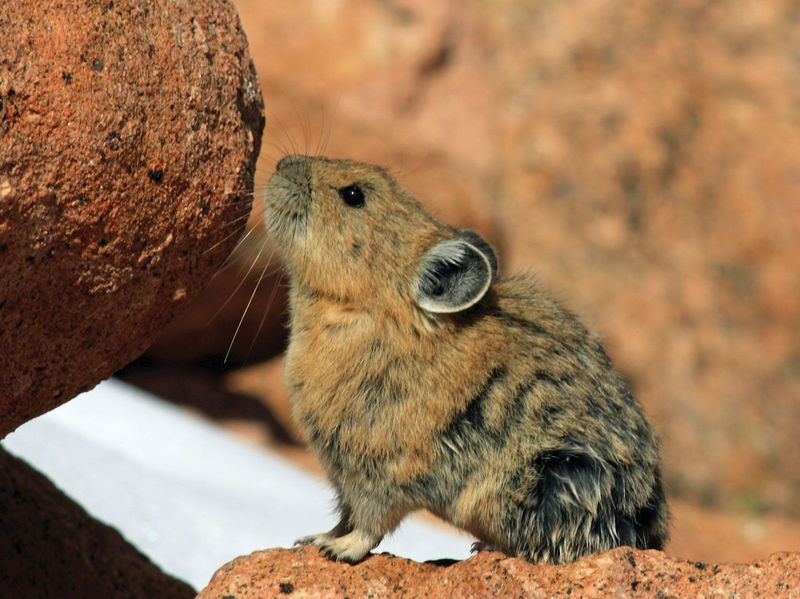
The Steppe pika (Ochotona pusilla) is a fascinating species that thrives in the grasslands and steppes of Central Asia. Unlike its mountain-dwelling relatives, the Steppe pika has adapted to a different set of challenges presented by open, flat landscapes. Its presence in these regions offers valuable insights into the diversity of pika species and their ecological roles.
With a keen sense of awareness and agility, Steppe pikas navigate their vast habitats with remarkable efficiency. They rely on burrows for shelter and protection against predators, showcasing their adaptability to different environments. Observing them in the wild is a testament to their resilience and ability to thrive in seemingly inhospitable areas.
The Steppe pika’s lifestyle emphasizes the adaptability of life and the various strategies species employ to survive in diverse habitats. Their existence in grasslands reminds us of the richness of Earth’s ecosystems and the importance of conserving these vital landscapes. Through the Steppe pika, we gain a deeper understanding of the interconnectedness of life and the myriad ways creatures adapt to their surroundings.
14. Climate Change Threat
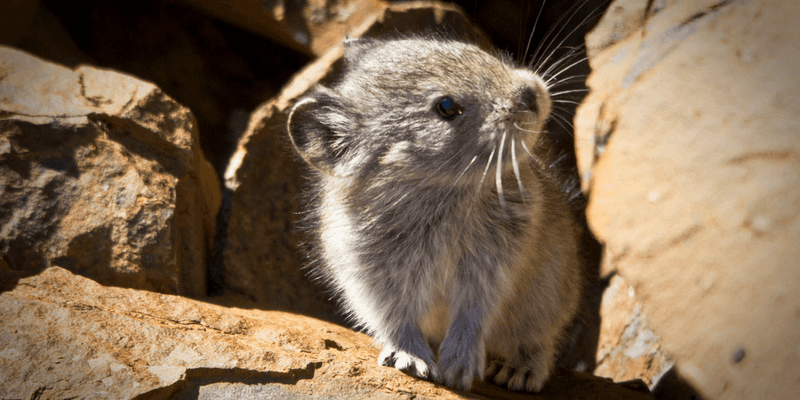
Climate change poses a significant threat to pikas, impacting their habitats and survival. As temperatures rise, pikas are forced to move higher up mountains to find cooler environments, reducing their available habitat and resources. This migration is not just a displacement; it’s a race against time as their options dwindle.
Pikas’ sensitivity to heat makes them particularly vulnerable to climate shifts. The shrinking of their habitats due to warming temperatures highlights the urgent need for climate action. Their plight serves as a poignant reminder of the far-reaching effects of global warming on biodiversity.
Through the challenges faced by pikas, we gain insight into the broader impacts of climate change on ecosystems. Their struggle represents a call to action, urging us to protect our natural world and ensure a future where biodiversity can thrive. Pikas, as sentinels of environmental health, remind us of the interconnectedness of life and the importance of sustainable practices.
15. Predators Everywhere
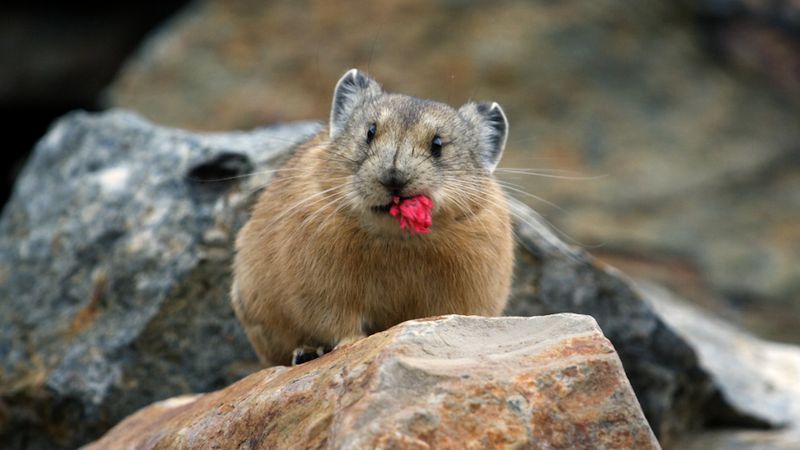
Pikas live under constant threat from a variety of predators, including owls, hawks, foxes, weasels, and coyotes. These predators are drawn to pikas due to their small size and swift movements, making them a favorite target in the wild. This dynamic of predator and prey plays a crucial role in maintaining the balance of ecosystems.
To evade these threats, pikas have developed remarkable agility and keen senses. They use their rocky habitats to their advantage, dashing between crevices and blending into their surroundings to escape detection. This constant vigilance is a testament to their survival instincts and adaptability.
The presence of predators is a natural part of the ecosystem, driving pikas to enhance their defensive strategies. This interaction highlights the complexity of food webs and the interconnectedness of life. Through their daily challenges, pikas teach us about the resilience required to navigate a world full of dangers and the delicate balance that sustains life.
16. Human Activity
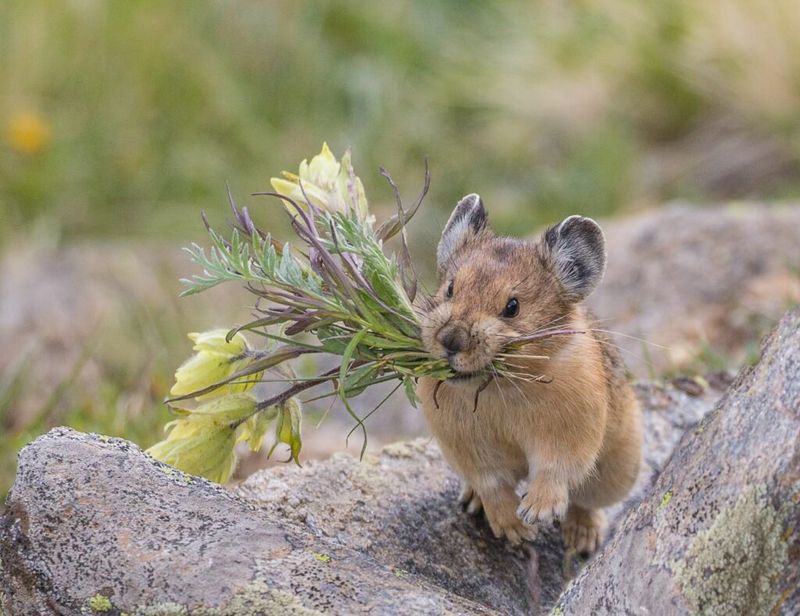
Human activity poses significant challenges to pika populations, particularly through habitat destruction and livestock grazing. As humans encroach on their natural habitats, pikas lose vital resources and safe havens, threatening their survival. This intrusion highlights the delicate balance between development and conservation.
Grazing livestock can lead to overgrazing, reducing the availability of plants that pikas rely on for food and haypile construction. These changes force pikas to adapt or move, adding stress to their already vulnerable populations. Observing this interaction underscores the need for sustainable land management and wildlife conservation.
The impact of human activity on pikas serves as a reminder of our responsibility to protect the natural world. Through conscious efforts, we can mitigate these effects and ensure that pikas continue to thrive in their native habitats. Their struggle reflects broader environmental challenges and the importance of fostering coexistence between human societies and wildlife.
17. Real-Life “Pikachu”
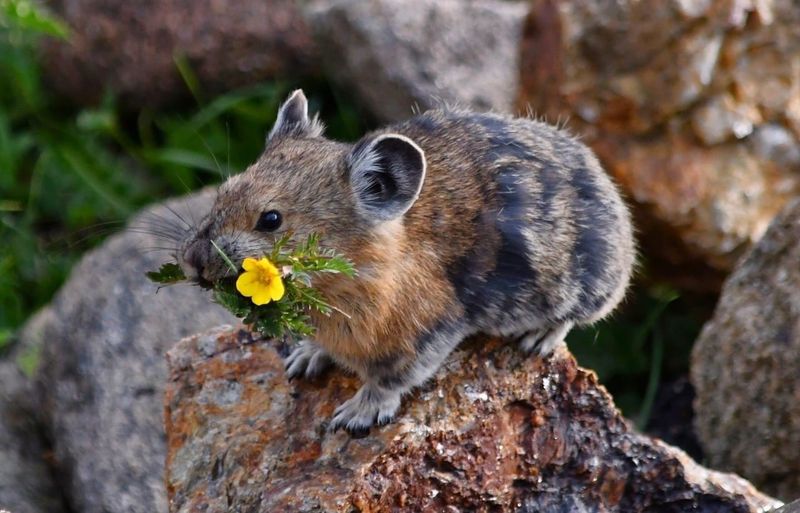
The resemblance between pikas and the beloved Pokémon character Pikachu is more than coincidental. With their small stature, round faces, and high-pitched calls, pikas have long been thought to inspire the iconic electric mouse. This connection has brought attention to these charming creatures, bridging the gap between popular culture and wildlife conservation.
While Pikachu is a fictional being, the real-life pika exhibits many traits that endear them to both nature enthusiasts and Pokémon fans alike. Their playful demeanor and distinctive calls make them favorites among those lucky enough to encounter them in the wild. This cultural crossover highlights the power of media in raising awareness about lesser-known species.
Through their association with Pikachu, pikas have gained a platform to spotlight conservation efforts. This unexpected blend of fantasy and reality serves as a delightful reminder of the wonder of nature and the stories it inspires. By cherishing both pikas and their fictional counterparts, we celebrate the beauty and diversity of life on Earth.
18. Fast Movers
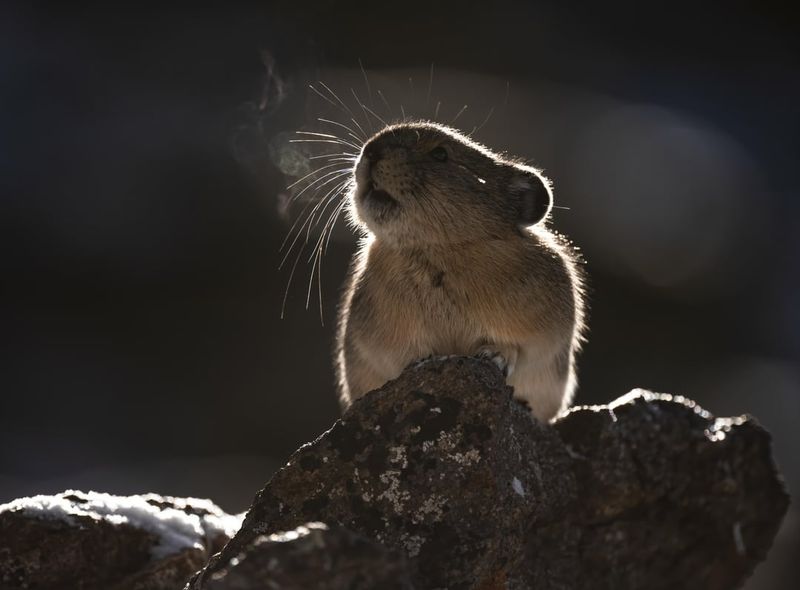
Pikas are known for their incredible speed and agility, essential traits for survival in their rocky habitats. These swift movements allow them to evade predators and navigate their challenging environments with ease. Observing a pika in action is like watching a tiny athlete, expertly maneuvering through its alpine playground.
Their ability to dash between rocks and disappear into crevices is a testament to their physical prowess. This agility not only helps them escape threats but also enables them to efficiently forage and build their essential haypiles. The combination of speed and strategy highlights their adaptability and resilience.
In a world where danger is ever-present, pikas’ fast movements symbolize the constant vigilance required for survival. Their agility serves as an inspiration for overcoming obstacles and thriving in demanding conditions. Through their tireless energy, pikas remind us of the innate drive to adapt and persevere, no matter the odds.
19. Surprisingly Strong Teeth
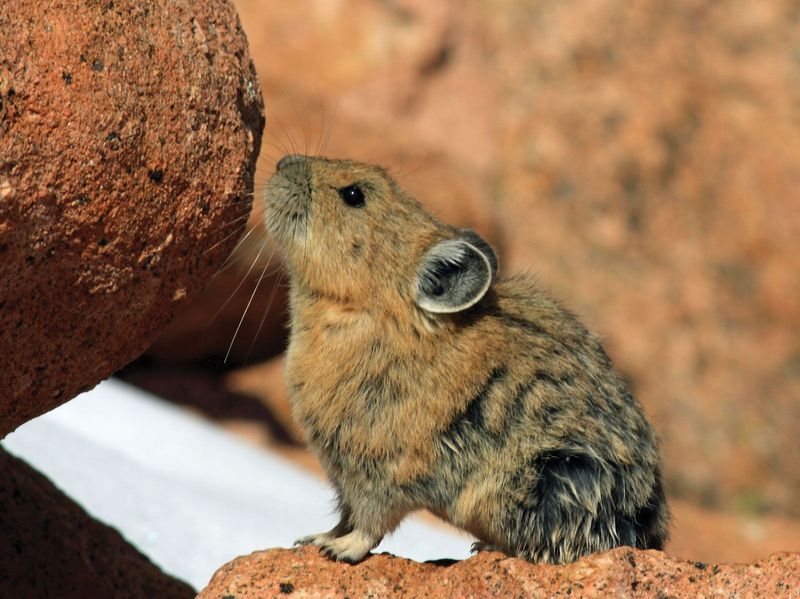
Pikas possess remarkably strong teeth, a crucial adaptation for their herbivorous lifestyle. Much like rabbits, their teeth grow continuously, requiring them to chew constantly to keep them trimmed. This dental adaptation ensures they can effectively process the tough plant materials that make up their diet.
Their strong teeth enable them to chew through fibrous stems and leaves, allowing them to access the nutrients they need to survive. This constant gnawing is not only a necessity but also a fascinating display of their evolutionary adaptation to their plant-based diet. Observing their chewing habits offers insights into the intricacies of their feeding behaviors.
The strength of their teeth underscores the importance of dental adaptations in herbivores. By maintaining their teeth, pikas demonstrate the careful balance nature strikes to ensure the survival of species. Their dental prowess is a reminder of the incredible ways animals evolve to meet the challenges of their environments.
20. They Look Like Plush Toys!
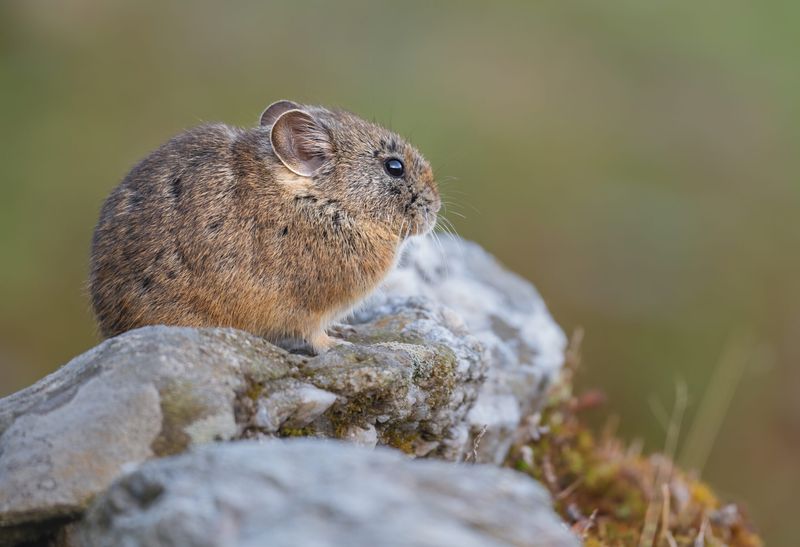
With their round bodies, big ears, and soft fur, pikas resemble tiny plush toys, endearing them to anyone who encounters them. This charming appearance is not just a visual delight but also plays a role in their survival. Their dense fur provides essential insulation against the cold, a crucial adaptation for life in mountainous regions.
Their cute and cuddly look captures the imagination, often drawing comparisons to fictional creatures and stuffed animals. This resemblance has helped raise awareness and interest in their conservation, as people are naturally drawn to their adorable features. Observing them in their natural habitat, one can’t help but appreciate their unique blend of beauty and practicality.
Pikas’ plush-like appearance serves as a reminder of the diversity and wonder of the animal kingdom. Their charming looks, combined with their resilience, make them symbols of nature’s creativity and adaptability. Through their endearing presence, pikas invite us to celebrate the richness of life and the importance of protecting these precious creatures.

